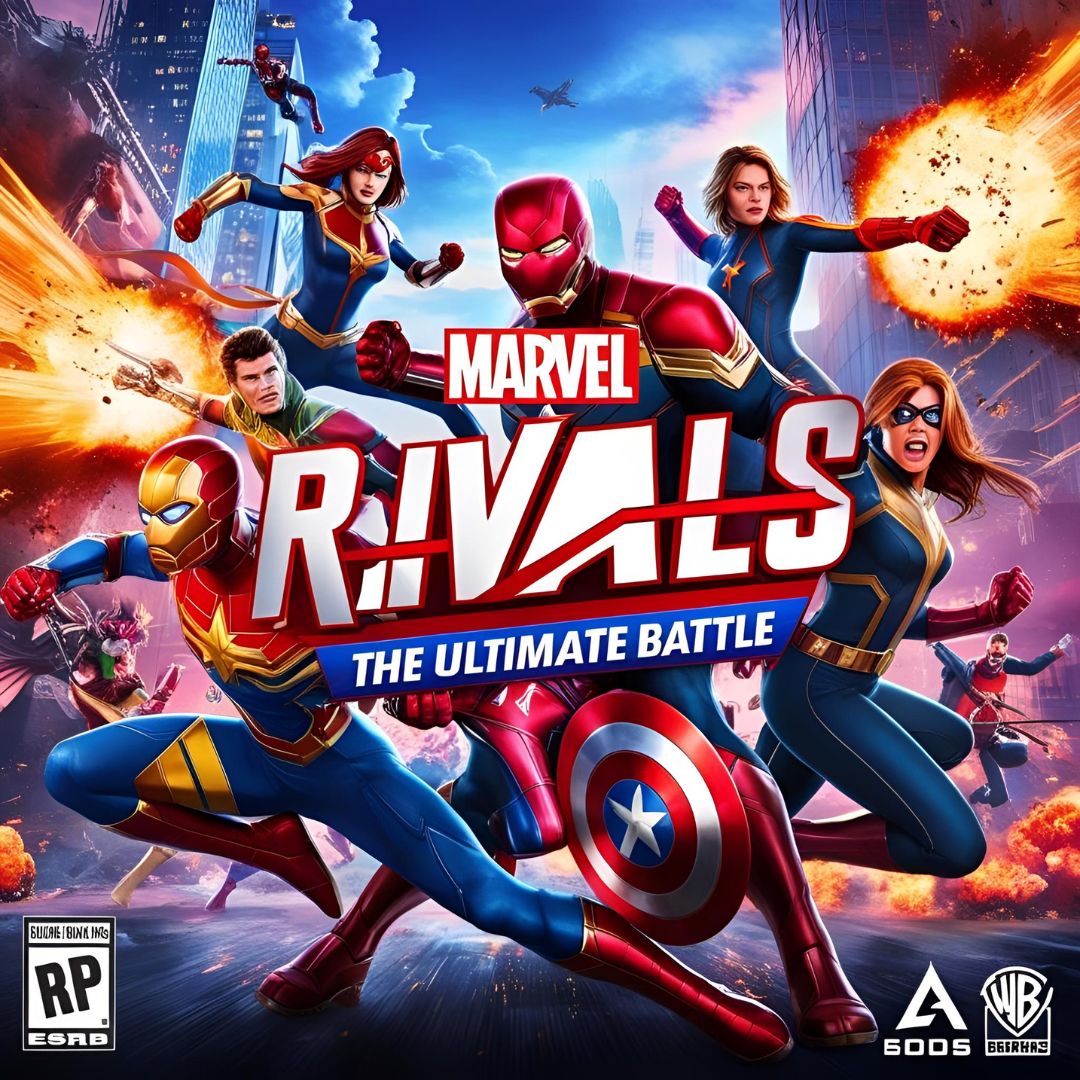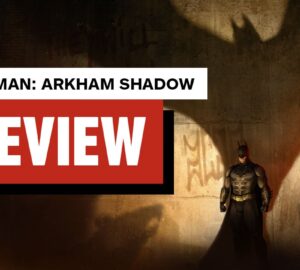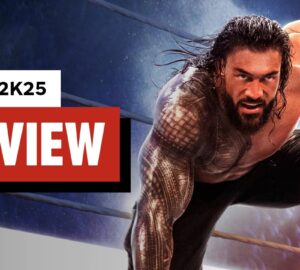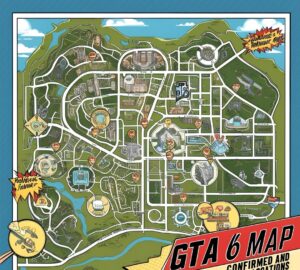Marvel Rivals is vying for the title of hero-shooter, and it’s difficult to deny that it has a right to do so. It has 6v6, no role queue, and a large roster of heroes with a great deal of variety—all essential components of a great hero shooter. It intentionally targets and resolves some of the main grievances players have with Blizzard’s shooter, despite stealing many of Overwatch’s concepts. Marvel Rivals features a visually arresting and unique art style that cleverly builds upon well-known concepts. It is much more than simply another also-ran hero shooter clone when you include the fact that it is an enjoyable multiplayer experience.
Gaming modes
With a third-person camera view and 6v6, Marvel Rivals offers a wide range of playstyles for its launch lineup. While maintaining a sense of coherence, it offers a variety of heroes, from straightforward shooting-focused characters like Punisher to intricate combat heroes like Spider-Man. There are a number of heroes that make the game easy to start up, and an amazing selection of alternative options that can progressively add complexity, even though it will surely be chaotic for players who are trying a hero shooter like this for the first time.
Game Overview
Only three primary game modes are available at launch: Domination, which is a battle for possession of a control point; Convoy, in which a team escorts a payload; and Convergence, which combines the two. These are dispersed among a number of maps drawn from the Marvel multiverse, including the Intergalactic Empire of Wakanda, Yggsgard, and Tokyo 2099. With the pristine appearance of Asgard juxtaposed with the crowded skyscrapers of Tokyo 2099, these various places offer an abundance of environmental variety. The map layouts alter the game’s flow, but the graphic styles don’t.
For instance, Klyntar and Tokyo 2099 both feature hybrid maps in which the attacking team must capture a control point to unlock a payload to push. However, Klyntar’s area from spawn to the point is much more open, allowing for more long-range hero options, while Tokyo 2099 has numerous buildings that block the defenders’ line of sight. More significantly, having fewer modes means that your team’s tactics won’t change as much from match to match, which could lead to them merging together because, aside from the team compositions, each match doesn’t feel very unique. This can make it visually stale.
Game Characters
The enormous roster of 33 characters, which may be mixed in countless ways due to the absence of a role queue, is what keeps things interesting. Players would be locked into one of the three classes (Strategist, Vanguard, or Duelist) by a role queue, which would need a flawless 2-2-2 composition. However, there is typically a great deal of variation in the team compositions across a large number of competitive and quick play matches, many of which can be feasible: It can be just as effective to drop a Vanguard in order to have a third Duelist as it is to run three Strategists with just one Duelist.
In addition to encouraging and rewarding aggression, teaming together Magik, Spider-Man, and Black Panther to overwhelm the opposition with close-range characters creates a very different match feel than simply sitting back with two tanks and isn’t achievable with forced roles. Although it occasionally results in your team running all Duelists and getting rolled as a result, the strategy it provides in return makes the trade-off worthwhile.
Even though they are mash-ups, many of these characters do have the impression of being taken directly from Overwatch, such as Starlord stealing traits from Reaper and Tracer. The skills of Black Widow and Hawkeye are similar to those of Widowmaker and Hanzo in Overwatch. Mantis may heal and buff foes similarly to how Zenyatta heals by placing orbs that heal over time, and Luna Snow has an ultimate identical to Zenyatta’s. However, other characters are more inventive, especially those that rely on melee.
For instance, Spider-Man, Iron Fist, and Magik seem like brand-new characters in Marvel Rivals. The same is true for several Vanguard characters, such as Groot, who is able to block entrances and defend his comrades by erecting a variety of walls. Instead of having a time limit like Mei’s from Overwatch, these walls will remain in place until they are demolished or Groot decides to shift them. A more dynamic power is created than a temporary wall when the barriers are destroyed, revealing your position to the enemy group. There are enough original concepts to prevent Marvel Rivals from being a ripoff, although occasionally there is a feeling of déjà vu.
Comic To Game !
Some intriguing characters have also resulted from the commitment to giving Marvel Rivals comic superpowers while maintaining a distinctive shooter. The prevalence of melee-only characters gives matches a more MOBA-like vibe, even if there are plenty of simple shooting heroes like Hela, Hawkeye, and Punisher. It can be difficult to perfect ability combinations for heroes like Spider-Man because you need to land four different abilities quickly in order to be effective. Many heroes have enough depth to present a challenge to experienced players, and it’s rewarding to become proficient in using the powers.
Currently, the more aggressive characters are favored by the game balance, but surprisingly few heroes feel unplayable in competitive modes—especially for a game with such a huge roster. Because there are so many possible characters, each match is kept interesting. Although there are some damage sponges that can occasionally be used, the main grievance is that there are far too many Strategist ultimates that heal so much that anything other than an ultimate from the opposing side is totally useless.
The team-ups, which confer additional skills if specific characters are on the same team, are another element of team building. Some provide more intriguing abilities, while others are straightforward, such as Adam Warlock giving some Guardians of the Galaxy the passive ability to resurrect after death. By using Magik’s portals, Psylocke and Black Panther can travel back in time a few seconds and gain bonus health, which act as makeshift shields. This enhances their skill set further and offers a quick method of determining effective team configurations without having to invest hours in fine-tuning which heroes work best together. You are also not compelled to play around the modest bonuses that most of these team-ups offer.
Game Drawbacks
Each character has a unique appearance and set of animations that make it easy to tell who you are looking at and what skills they are utilizing. Characters with comparable physical characteristics, such as Mantis, Dagger, and Luna Snow, may all be quickly recognized because to their unique coloring and motions. Because skins can slightly change a character’s appearance, especially when more complex and colorful skins are added in the future, the recognition of motions and silhouettes is equally vital.
Though it does rely more on efficiency than elegance, the acoustic design is a little messier. Characters frequently yell, identifying foes or special skills—for example, Moon Knight positioning an Ankh to bounce assaults off of. Due to the strength of ultimate attacks, these callouts make Marvel Rivals easier to play, but they can also make the game too loud. You can respond fast to these events since each character has a loud cry for their ultimate, which varies depending on whether they are an enemy or a friend.
Although it can occasionally be annoying—for example, Winter Soldier shrieking loudly on each ultimate retrigger, which can occur seconds apart—it is necessary for battlefield management. Many of the weapons and abilities have unique noises in addition to shouting, which makes the shooter more competitive by cutting down on the time it takes to recognize and respond to an attack.
Marvel Rivals’ competitive mode isn’t all that different from quick play, with just two major differences. First, in order to provide a fair battle, payload maps require both sides to play both attack and defense. Second, two to four heroes can be banned in matches with a Diamond rank or higher. Bans do restrict some of the tactics that make Marvel Rivals so captivating, even though it’s good to limit some of the stronger heroes.
It could make more sense if you were locked into your pick for the duration of the match, but since you can switch at any point, it eliminates key essential counterpicks that let you change the momentum of a match. Players of all skill levels may be present depending on how much they have played, therefore there are some odd matches in the lower ranks as a result of starting at Bronze and working your way up instead of being placed.
Where you can get Marvel Rivals ?
Despite having microtransactions because Marvel Rivals is free-to-play, its pricing is very regular. Future heroes are all free, and the only items available for purchase are cosmetics. Marvel Rivals is not the first game to offer battle passes that never expire, but it is a rare yet appreciated practice. It’s a nice quality-of-life feature to know that you won’t lose out on cosmetics in a battle pass you already paid for because you don’t have time to play.
The cost of cosmetics is high, but not significantly higher than that of many other games; epics cost about $18 and legendaries about $23. One benefit is that Marvel Rivals, at least thus far, is quite picky about which skins are considered legendary; some unexpectedly cool skins are priced at the epic tier. Overall, the $10 battle pass is a fairly good deal because it comes with 10 skins, some premium cash, and lesser cosmetics like name plates, sprays, and MVP intros.
Conclusion
All things considered, Marvel Rivals seems to be the only hero shooter to truly embody the genre’s enchantment since Overwatch’s 2015 release. It focuses on making the game enjoyable for all players, has a fantastic graphic style, and a ton of heroes to choose from. Even though it takes inspiration straight from Overwatch, its more unique concepts give it a new vibe. Marvel Rivals is a fantastic multiplayer shooter in its early stages, and it may continue to be so for years to come if it can provide quality updates.








